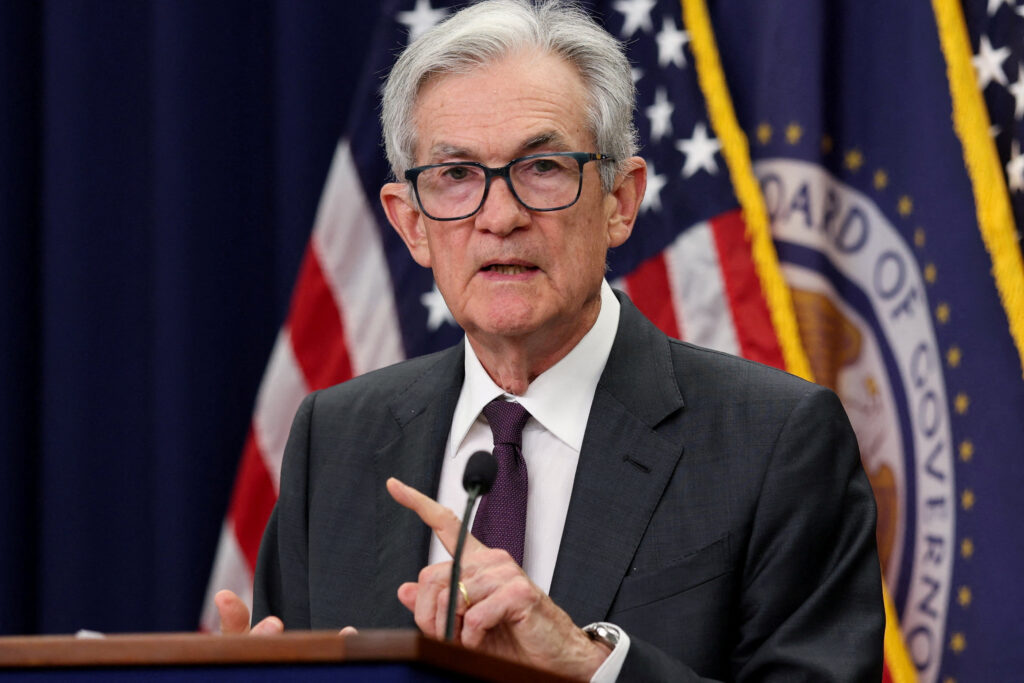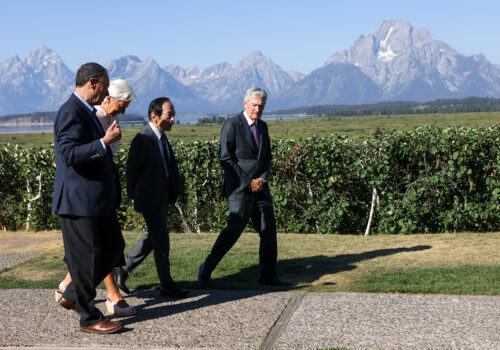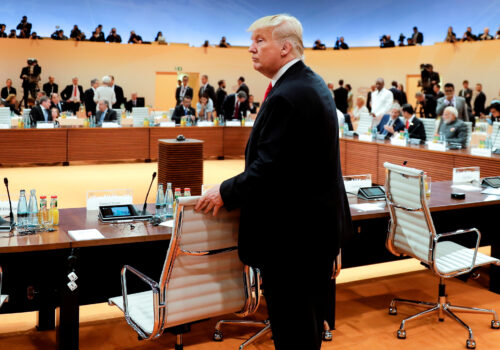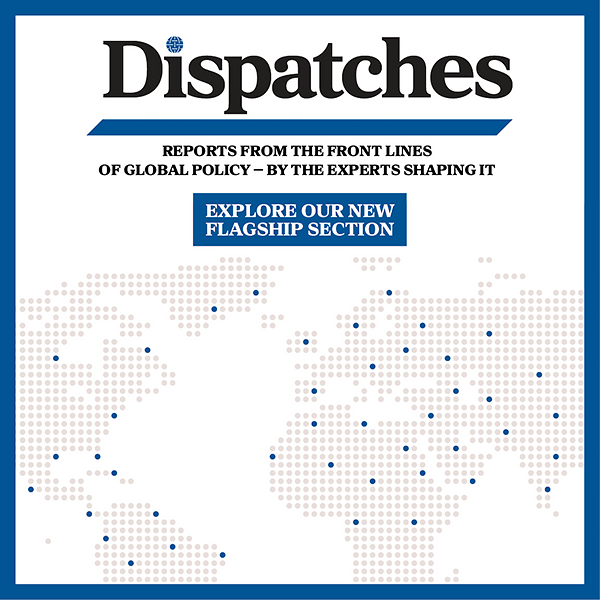At the 2025 Jackson Hole Symposium last week, Federal Reserve Board (Fed) Chairman Jerome Powell gave a well-reasoned and balanced assessment of the current economic challenges for monetary policymaking. His speech provided a clear framework of how the Fed would carry out its policy considerations. Financial markets rallied following his speech, with many investors believing that the odds of an interest rate cut at the next Federal Open Market Committee meeting on September 16-17 have surely increased.
But while Powell provided much to think about over the next few weeks, what remains unclear is what happens after that. US President Donald Trump has begun to nominate Fed members who share the White House’s economic agenda, including the view that the Fed’s focus should be on lowering interest rates. As a new Fed takes form, how might its approach differ from the one it has taken under Powell? The answer to that question could greatly impact the economy in the years ahead.
Current assessment
Powell’s speech outlined the core dilemma facing the Fed: Inflation and employment—the objectives of its dual mandate of price stability and full employment—are poised to move in opposite directions. This divergence will likely make it more difficult for the Fed to steer the right course.
Inflation, as measured by the annual Consumer Price Index, fell from 3 percent in January to 2.7 percent in July, despite concerns that raising tariffs could increase inflation. Trump recently referred to the decline in inflation to bolster his call for the Fed to cut rates. So far, it appears that the transmission of tariff costs to higher retail prices has been delayed by the absorption of tariffs in the profit margins of importing companies. However, there have been recent signs that companies may begin to pass at least some of their tariff costs to consumers. This is reflected in the 3.3 percent increase in the Producer Price Index in July. Moreover, the Import Price Index, collected before taxes, has not shown any clear evidence of foreign suppliers having reduced their prices in response to tariffs. While a one-time increase in tariffs would raise price levels once but not generate ongoing inflation, prospects of future tariffs and the lengthy transmission process could change consumers’ inflation expectations away from the 2 percent anchor, something the Fed is keen to avoid. This prospect would call for caution from the Fed.
By contrast, employment has slowed noticeably. Over the past three months, employment gains averaged 35,000 per month, down from from 168,000 per month during 2024. Economic growth has slowed, too, to 1.2 percent in the first half of the year, compared to 2.5 percent in 2024. However, the unemployment rate has only inched up to 4.2 percent, still a historically low level, and other labor market indicators remain little changed. Further making things difficult for the Fed is the fact that the supply side of the labor market has also declined due to tight immigration policy actions. This has led to what Powell referred to in his speech as a “curious kind of balance” where downside risks to employment could quickly materialize. This is largely due to a factor that Powell did not mention: the narrow base of economic growth and stock market performance, which has largely been driven lately by a handful of big high-tech corporations involved in artificial intelligence.
According to Powell, the Fed would adopt a balanced approach to deal with the potentially opposing movements of inflation and employment. Concretely, this means that “the shifting balance of risks may warrant adjusting [the Fed’s] policy stance.” Such forthright guidance has been viewed as confirming that the Fed has paid attention to slowing employment, thus opening the door to a decision to cut rates in the coming weeks. However, this approach also means that if the balance of risks shifts toward accelerating inflation, as upcoming data could indicate, then the Fed may have to pause again—making the presumption of a series of rate cuts, as reflected in current market consensus, vulnerable to disappointment.
Reviewing and updating the Fed’s policy strategy
More broadly, Powell confirmed in his Jackson Hole speech that the Fed has abandoned its flexible average inflation targeting (FAIT) policy strategy, approved in August 2020. This strategy implied a tolerance for a period of high inflation to make up for a period of inflation lower than its 2 percent target. From now on, the Fed will revert back to its traditional flexible inflation targeting policy framework, aiming to anchor inflation and inflation expectations at the 2 percent target.
The decision to rectify the FAIT strategy is welcome, though belated, as such an approach has been seen by many analysts as contributing to the Fed’s failure to prevent inflation from surging to a decades-high level of 9.1 percent in 2022. The surge in inflation and the significant tightening of monetary policy needed to cool inflation have seriously dented the Fed’s credibility, which will likely require years of good performance to recuperate.
In Jackson Hole, Powell presented a thoughtful policy framework, helping market participants understand and form expectations of the Fed’s monetary policy decisions in the foreseeable future. But the big unanswered question is: How will the emerging Fed, increasingly populated by members who share the president’s economic agenda—and which will have a new chair after May 2026—execute the Fed’s dual mandate of pursuing price stability and full employment? That will have more impact on financial markets and the economy than Powell’s swan-song speech.
Hung Tran is a nonresident senior fellow at the Atlantic Council Geoeconomics Center and senior fellow at the Policy Center for the New South; and a former senior official at the International Institute of Finance and International Monetary Fund.
Further reading
Fri, Aug 22, 2025
Trump’s challenges to the Fed’s independence loom over Jackson Hole Symposium
Econographics By Alisha Chhangani
As Trump tests the limits of what he can do, the credibility of the Fed—and by extension, global financial stability—is increasingly at risk.
Thu, Jun 19, 2025
Hawks vs. doves: The split between the Fed and the ECB
Econographics By Bart Piasecki
While the ECB signals an end to its rate-cutting cycle, the Fed hesitates. This article explores the macroeconomic and policy reasons behind it.
Tue, Apr 8, 2025
No one is coming to save the global economy
New Atlanticist By Josh Lipsky
Neither the Group of Twenty nor the Federal Reserve should be expected to use their playbook from previous economic crises to respond to economic shocks caused by US tariffs.
Image: US Federal Reserve Chair Jerome Powell gestures during a press conference following the issuance of the Federal Open Market Committee's statement on interest rate policy in Washington, DC, US, July 30, 2025. REUTERS/Jonathan Ernst/File Photo




